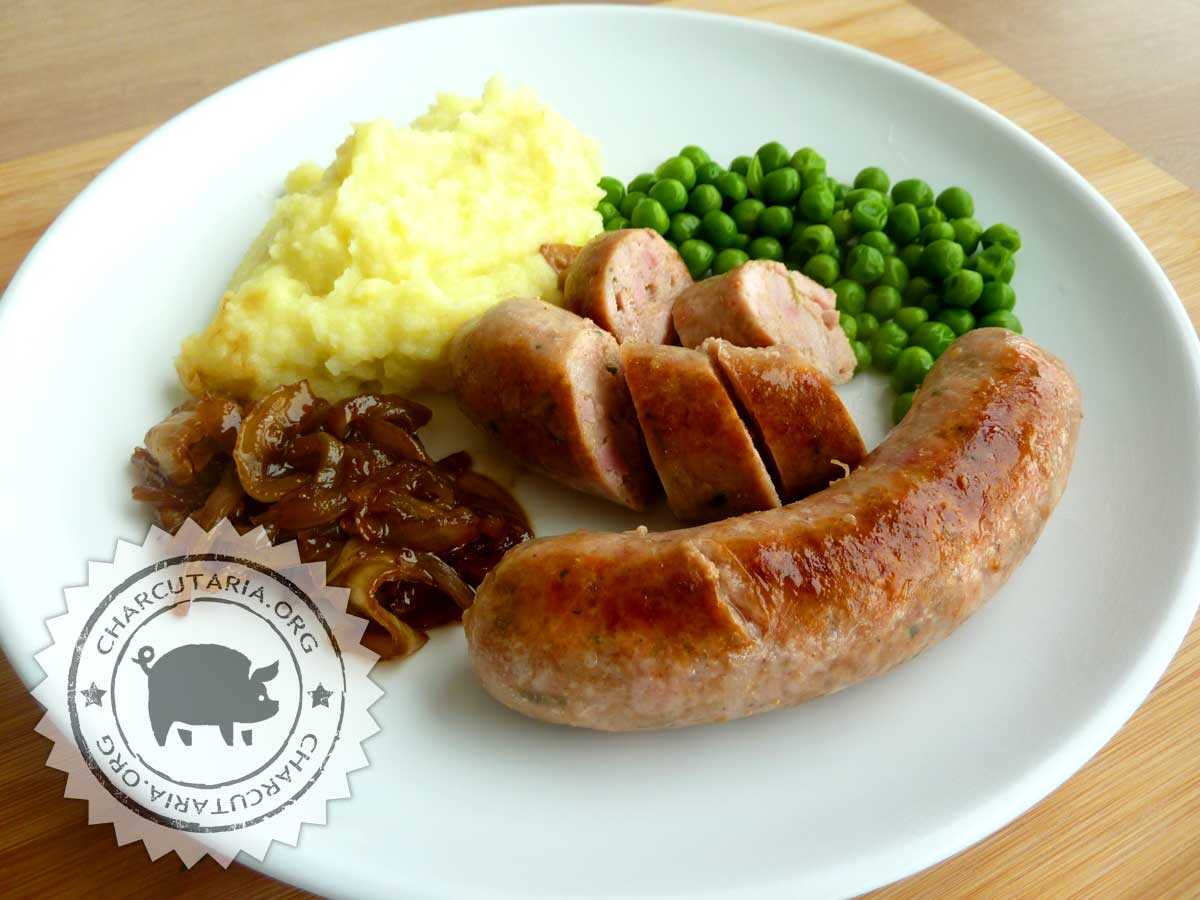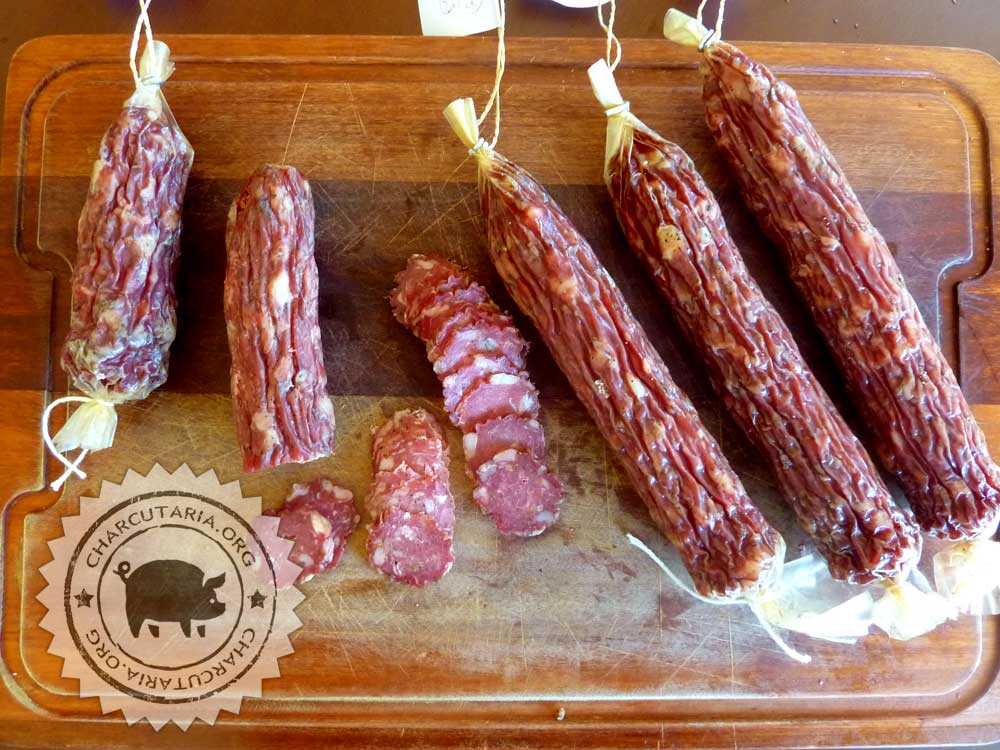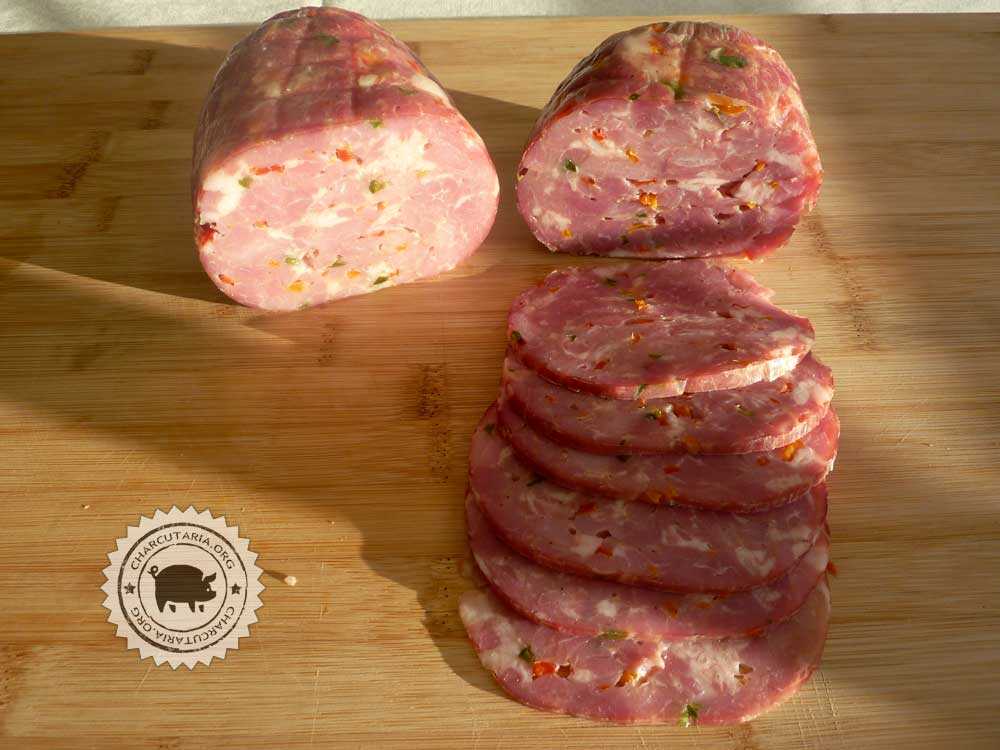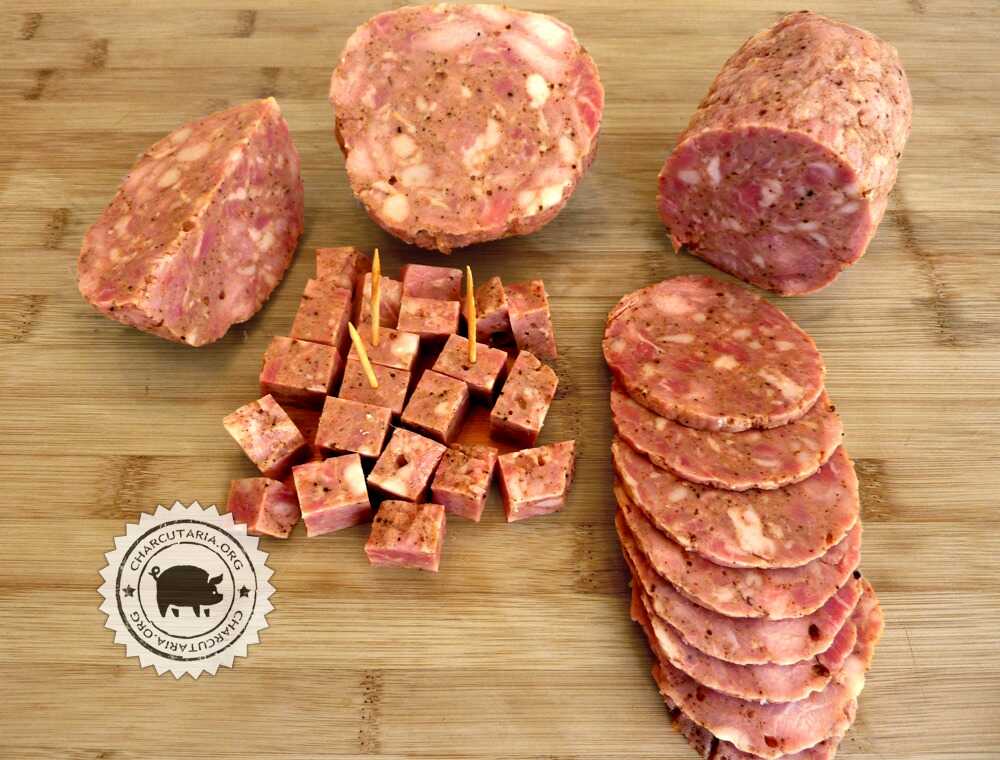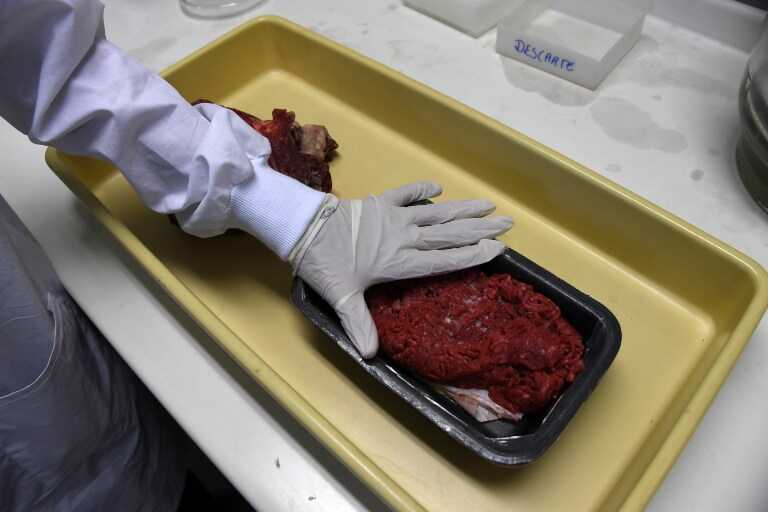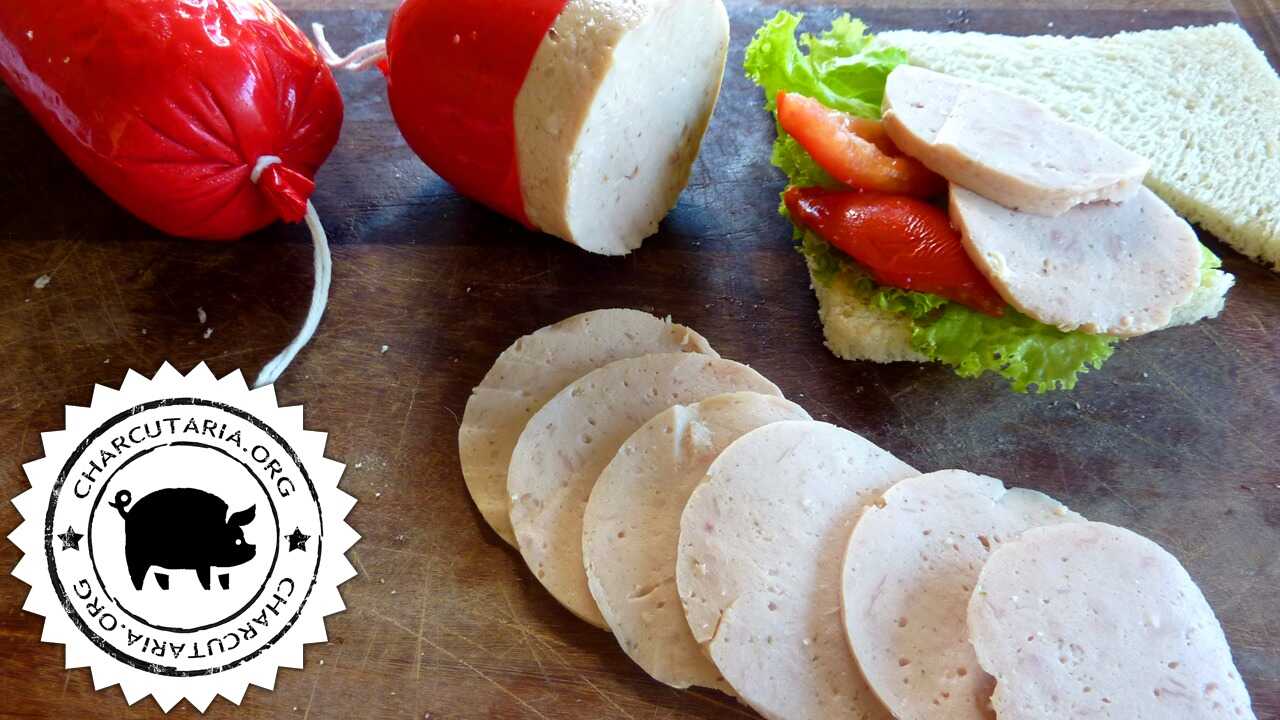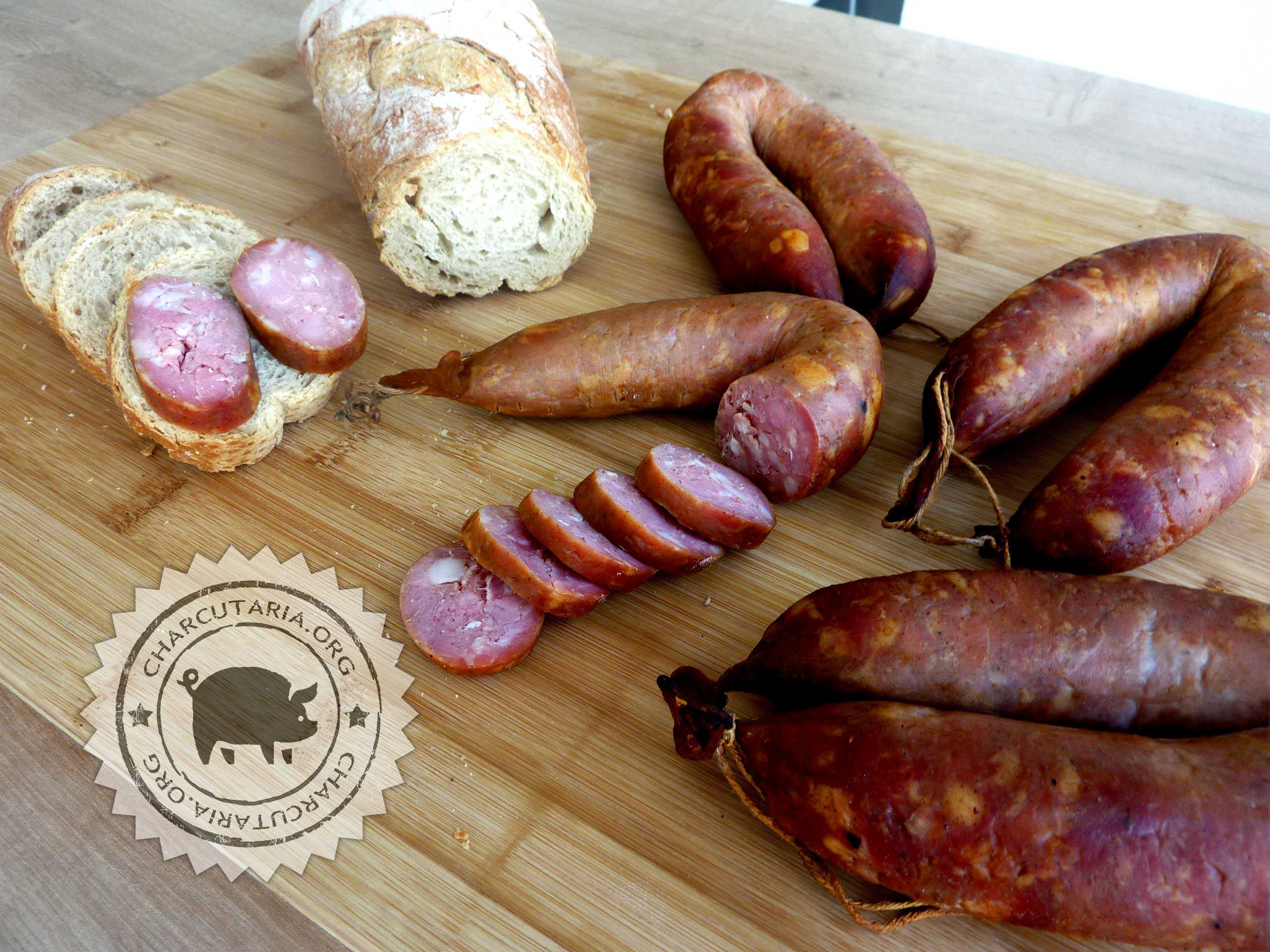
Blumenau type sausage is a nomenclature commonly used in Brazil for a type of German sausage called Mettwurst. Mettwurst sausage or Blumenau sausage is a raw, cured, smoked, fermented and dried sausage. The freshness of the meat is maintained through the processes of curing, fermentation, drying, maturation and smoking. In Europe, especially in Germany, it is also known as Teawurst and is a specialty served in sandwiches or appetizers. Because it is soft, it can be spread on bread or toast like a pâté. It can have a thick texture (small pieces of meat and fat) or thin texture (like a paste). They are great on appetizers or cold cuts served with bread and beer.
You can get a doughier texture by grinding the meat more finely or a firmer texture by grinding the meat and fat with the coarser disc (or slicing the meat finely with a knife). In this recipe I grinded on a coarse disc to obtain a firmer blumenau mettwurst sausage. Regardless of the grind, mettwurst meat will always be very soft and soft, but grinding makes the sausage more uniform or more brittle.
Continue reading Linguiça Blumenau Mettwurst
